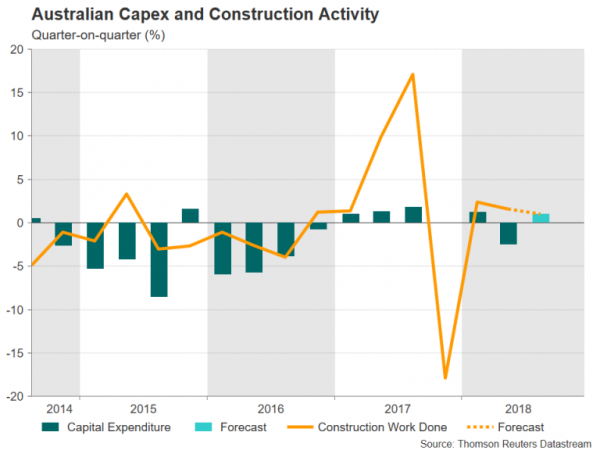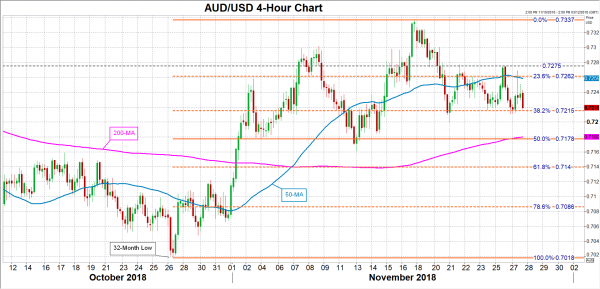The Australian dollar ended three weeks of strong gains last week and is possibly headed for a second weekly loss as market sentiment takes another turn for the worse. But as trade tensions rage on and Chinese growth slows, the Australian economy is enjoying strong growth and rising employment. The focus over the next week will be on how well the fundamentals stood up during the third quarter. The raft of Q3 indicators will start on Wednesday with construction work done (0030 GMT), followed by capital expenditure on Thursday (0030 GMT).
Construction work done in Australia bounced back in the first half of the year after a big plunge at the end of 2017 and was up 1.6% quarter-on-quarter in Q2. It is expected to have risen by a further 1% q/q in the July-September period. But a weaker figure is possible as tighter lending regulation by the country’s central bank, the Reserve Bank of Australia, is being blamed for the recent weakness in the construction sector, mainly as a result of a slowdown in residential construction activity.
Business spending is also expected to have recorded positive growth during the third quarter, having fallen by 2.5% q/q in the prior three months. Capital expenditure is forecast to have grown by 1% q/q in Q3. Of particular interest for investors from the capex numbers will be whether non-mining investment continues to trend higher as this is vital for offsetting the decline in mining investment. A more modest increase than anticipated, or even a second consecutive quarterly drop in capex, is unlikely to weigh too heavily on GDP growth in Q3. However, a deteriorating trend would not bode well for future growth prospects.
The aussie is not expected to see very dramatic moves from this week’s data but should still see notable reaction as the figures will be a precursor to next week’s GDP release, due on December 5. If the data surprise to the upside, aussie/dollar might be able to rise past immediate resistance around 0.7260, which is near the 50-period moving average and the 23.6% Fibonacci retracement of the upleg from 0.7018 to 0.7337. However, there’s likely to be an even stronger obstacle slightly higher around 0.7275. A break above this level would clear the path for re-challenging November’s 2½-month high of 0.7337.
On the other hand, should the data raise concerns that the Australian economy is losing some steam, aussie/dollar could slip below the current support area around 0.7215, which is the 38.2% Fibonacci retracement level. Falling below this level could accelerate the decline towards the 50% Fibonacci at 0.7178, just below the 200-period moving average. A drop below the 50% Fibonacci would increase the downside risks for the pair and bring into focus the 61.8% Fibonacci at 0.7140.














